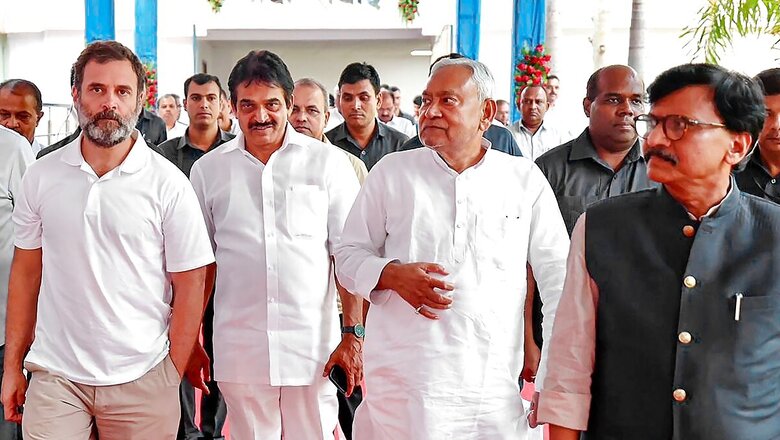
views
The Bihar caste survey details have sparked off a nationwide debate about “Jitni abadi, utna haq” (as much right as is your population) propagated by top Congress leaders, including its president Mallikarjun Kharge and MP Rahul Gandhi, making a strong case for further enlarging the reservation pie. In an animated attack on social media site X, the opposition INDIA bloc leaders lent their support to the whole idea may end up harming the grand old party in as many as 105 assembly seats in poll-bound Madhya Pradesh, which is dominated by upper castes. No wonder, the BJP is treading very cautiously—not siding with either side—as Prime Minister Narendra Modi gave it a different spin, saying, “poverty is the biggest caste” from a rally in Chhattisgarh.
BRAHMINS RULE VINDHYA, MAHAKAUSHAL & CHAMBAL
Out of the 105 seats dominated by the upper castes, there are 60 where Brahmins are the dominant force, while in 45 seats Thakurs play a decisive role. The Vindhya region of Madhya Pradesh is one of the few across India where Brahmins call the shots. A study by Azim Premji University says a total of 29% of upper-caste voters of Madhya Pradesh are from this region alone. It has as many as seven districts and 30 assembly constituencies. What’s more, out of the 30 seats, 23 have more than 30%, Brahmin voters. Across the state, there are around 45 lakh Brahmin voters, constituting more than 10% of the entire electorate.
If you think Brahmins call the shots in the Vindhya region alone, you are highly mistaken. They are a decisive factor in many assembly seats in the Chambal and Mahakaushal regions as well.
The importance of this caste can be gauged from the fact that the Hoshangabad constituency has witnessed 22 Brahmin MLAs in 61 years, regardless of the political party.
THAKURS & THEIR 8 MINISTERS
There are as many as 45 assembly seats if not more where Thakurs are a dominant factor. They are also the most influential caste as far as governance in Shivraj Singh Chouhan’s government is concerned. There are as many as eight Thakurs in his council of ministers.
Just a few months ago, Chouhan had to go for a cabinet expansion to rejig the caste calculus ahead of the crucial assembly election, which by that time wasn’t looking very promising for the BJP, even by its internal findings. His 34-strong council of ministers now has 12 from the upper castes: three Brahmins, eight Thakurs, and one Kshatriya.
Out of the 230 seats, there are Thakurs MLAs in as many as 34 in Madhya Pradesh, right now. This explains why the birth anniversary of Maharana Pratap of Mewar, Rajasthan, is observed as a holiday in Madhya Pradesh.
No wonder, during campaigning, Anurag Thakur and Pramod Sawant were in the state to join two separate Jan Aashirwad Yatras in the Mahakoshal and Malwa-Nimar regions, where they tried to reach out to the upper castes by vehemently criticising Udhayanidhi Stalin’s remarks on Sanatan Dharma, associating the Congress with the issue for being an electoral ally.
Bihar chief minister Nitish Kumar released the caste census data that is openly celebrated by Rahul Gandhi, demanding more rights for the SCs, STs, and OBCs, and the upper castes of Madhya Pradesh are clearly not the happiest lot.




















Comments
0 comment